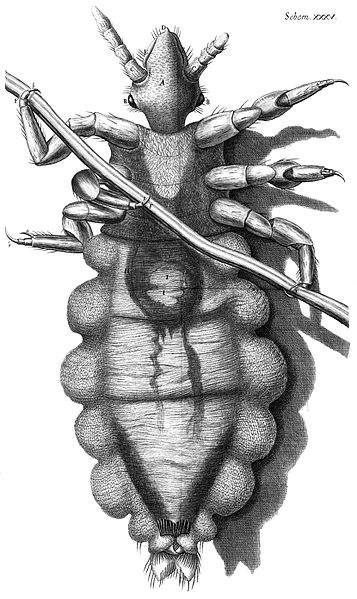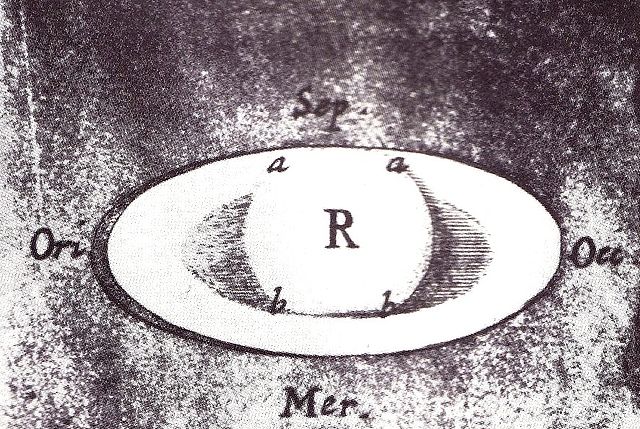Micrographia: or Some Physiological Descriptions of Minute Bodies Made by Magnifying Glasses. With Observations and Inquiries Thereupon. is a historically significant book by Robert Hooke about his observations through various lenses. It was the first book to include illustrations of insects and plants as seen through microscopes.
Microscope manufactured by Christopher White of London for Robert Hooke. Hooke is believed to have used this microscope for the observations that formed the basis of Micrographia. (M-030 00276) Courtesy - Billings Microscope Collection, National Museum of Health and Medicine, Maryland.
Hooke's drawing of a louse
Hooke's drawing of a flea
Hooke was the first to apply the word "cell" to biological objects: Cork.
Robert Hooke was an English polymath who was active as a physicist, astronomer, geologist, meteorologist and architect. He is credited as one of the first scientists to investigate living things at microscopic scale in 1665, using a compound microscope that he designed. Hooke was an impoverished scientific inquirer in young adulthood who went on to became one of the most important scientists of his time. After the Great Fire of London in 1666, Hooke attained wealth and esteem by performing more than half of the property line surveys and assisting with the city's rapid reconstruction. Often vilified by writers in the centuries after his death, his reputation was restored at the end of the twentieth century and he has been called "England's Leonardo [da Vinci]".
c. 1680 Portrait of a Mathematician by Mary Beale, conjectured to be of Hooke but also conjectured to be of Isaac Barrow
Robert Boyle by Johann Kerseboom, at Gawthorpe Hall, Lancashire
Illustration from The posthumous works of Robert Hooke... published in Acta Eruditorum, 1707
Hooke noted the shadows (a and b) cast by both the globe and the rings on each other in this drawing of Saturn








